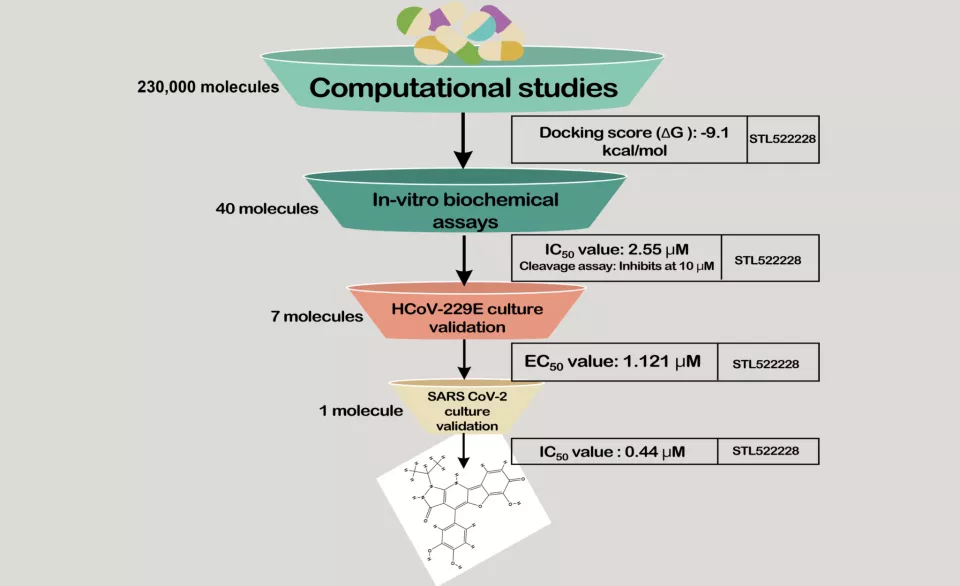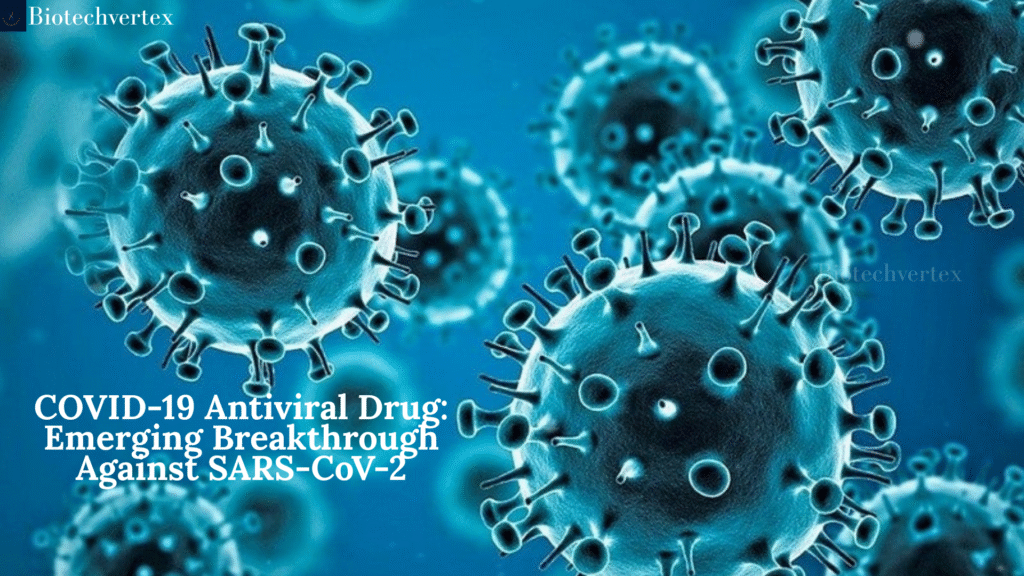There is nothing in Covid-19 from which everyone is not familiar with. But the insight of the fight does. The Regional Centre of Biotechnology (RCB) in Faridabad, the All India Institute of Medical Sciences (AIIMS) in Delhi, the Shiv Nadar Institute of Eminence (SNIoE) in Noida, and Srikara Biologicals in Tirupati have all conducted recent studies to combat the COVID-19 pandemic and possible future outbreaks. They found a chemical substance that prevents the SARS coronavirus (Severe Acute Respiratory Syndrome) from producing a vital protein. This promising chemical can be proven as an effective antiviral treatment in the future.
The highly contagious Severe Acute Respiratory Syndrome coronavirus 2 (SARS-CoV-2) was responsible for the severe COVID-19 pandemic. It first appeared in late 2019. The appearance of new virus variations highlights the significance of focused research into finding inhibitors that can stop viral growth and cure coronavirus infections.
Discovery of Antiviral Inhibitor:
A group of scientists has found an entirely novel chemical molecule known as STL522228. It is named for 4-(3,4‑dihydroxyphenyl)-6,7‑dihydroxy-1-isopropyl-1H-benzofuro[3,2‑b]pyrazolo[4,3‑e]pyridin‑3(2H)-one. This molecule holds the capability to inhibit the action of a specific protein called “Mpro” within the virus, which is responsible for its multiplication.
Deepak Sehgal, a Professor at SNIoE, has shown his belief in the discovery of molecules. He stated that it can be proven as a promising drug to combat coronavirus and associated future concerns. Still, it is under clinical trial. Various research studies are ongoing that have shown concern for recurring coronavirus outbreaks, and pandemic severity. Vaccination has provided a defense against infection, but what we still need is antiviral treatment to completely eradicate it.
Marceline Côté, Director of the University of Ottawa Centre for Infection, Immunity, and Inflammation and Canada Research Chair in Molecular Virology and Antiviral Therapeutics, recently published in the peer-reviewed journal “The FEBS Journal,” states,
“The development of antiviral treatments against SARS-CoV‑2 and various coronaviruses is crucial to managing the pandemic and enhancing preparedness for future pandemics.”
Research and Development:
Mpro, the main viral SARS-CoV-2 protein, was identified as a critical protein during the chemical discovery process. It is responsible for viral replication through the viral polyprotein. This protein is available in the virus, not in the host, so it becomes a crucial target for antiviral drug development.
In an HCoV-229E system, STL522228 demonstrated strong antiviral efficacy and superior action in the SARS-CoV-2 system.

According to the research, MPro, the main protein of the virus, is crucial for viral replication through viral polyprotein. The discovered inhibitor abrupt the enzymatic activity and prevent the viral replication. This is how, it control the infection within the host cell.
Researchers extracted various compounds from different databases. Ultimately, they used computational docking to identify STL 522228 as a strong inhibitor. It shows the interactions with amino acid residues (Cysteine and Histidine) which is present in active site of Mpro. Inhibitor-target interaction is another method used to identify the drug interaction regions of the enzymes. This study is come through by biotechnology techniques and instrumentation computational simulations, binding, and biochemical assays.
Challenges:
The Mpro originally does not show any inhibition activity, and there is no defined technique or assay to study it. So, it became a challenge to formulate an assay through which enzymatic activity, inhibition, and interactions can be assessed. Cell-based assays, in vitro biochemical methods, and the in silico technique are used to screen the Mpro.
Due to safety, it is not possible for the researchers to grow the virus in the lab via in vivo. Then, the Mpro structures of SARS-CoV-2 and the Human Coronavirus 229E (HCoV-229E) surrogate system exhibit a significant extent of similarities. Then, the Human Coronavirus 229E (HCoV-229E) surrogate system is also employed in cell-based antiviral tests against SARS-CoV-2.
Result
The inhibitor and Remdesivir, the reference medication used to stop the spread of the SARS-CoV-2 virus, have similar effects. The viral load is said to be reduced by 97% when the inhibitor is administered.
It was also found that the Inhibitor shows strong interaction with the Coronaviridae family, so it can be proven as a promising drug for coronavirus. Not only that, STL522228 meets all the terms and needs described in Lipinski’s drug design rules, which makes it favorable to be used as an antiviral drug. Structural modifications can boost the inhibitor’s efficacy. In such a way, it can be developed as a potential therapeutic drug against the coronavirus in the future.



